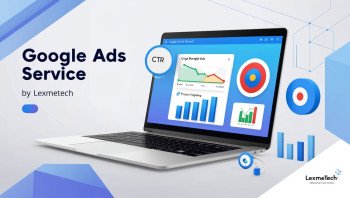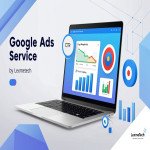In today's digital marketing landscape, businesses are constantly looking for the best advertising platforms to maximize reach, engagement, and conversions. Two of the biggest contenders in the online advertising space are Meta Ads (Facebook & Instagram Ads) and Google Ads. But which one should you choose for your business? Let’s break it down with real insights, comparisons, and actionable takeaways.
Understanding Meta Ads and Google Ads
What Are Meta Ads?
Meta Ads refer to paid advertisements on Facebook, Instagram, Messenger, and WhatsApp. These ads help businesses reach potential customers based on their interests, behaviors, and demographics rather than specific search queries.
What Are Google Ads?
Google Ads allow businesses to appear on Google Search, YouTube, Display Network, and other partner websites. This platform primarily targets users based on their search intent, making it highly effective for capturing high-converting leads.
Key Differences Between Meta Ads & Google Ads
Meta Ads rely on interest-based targeting, which means they show ads to users who might be interested in your product but are not necessarily searching for it. This makes them ideal for brand awareness and engagement-driven campaigns. On the other hand, Google Ads use intent-based targeting, meaning they serve ads to people actively looking for a product or service, which leads to higher conversion rates.
Meta Ads Strengths:
✔ Advanced audience targeting: Targets users based on interests, demographics, and behaviors.
✔ Visually engaging ad formats: Image, video, carousel, and story ads enhance engagement.
✔ Cost-effective for brand awareness: Generally lower CPC compared to Google Ads.
✔ Strong for eCommerce & B2C brands: Encourages impulse purchases through attractive visuals.
Meta Ads Weaknesses:
❌ Lower purchase intent: Users are not actively searching for your product.
❌ Ad fatigue: High competition means users see many ads daily.
❌ Privacy limitations: iOS updates and tracking restrictions can impact performance.
Google Ads Strengths:
✔ High purchase intent: People actively searching for products/services are more likely to convert.
✔ Diverse ad formats: Text, display, shopping, and video ads for varied marketing goals.
✔ Best for B2B & local businesses: Effective for professional services and location-based advertising.
✔ Multiple budget optimization options: CPC, CPA, and ROAS strategies allow for better cost control.
Google Ads Weaknesses:
❌ Higher CPC & competition: Popular keywords can be expensive.
❌ Requires deep keyword strategy: Unlike Meta Ads, success depends on keyword research and bidding.
❌ Steep learning curve: Requires expertise in bid management, match types, and tracking.
Which One Should You Choose?
Go with Meta Ads if:
✅ Your business relies on visual storytelling (fashion, fitness, beauty, home decor).
✅ You want to build brand awareness & engagement through interactive ads.
✅ You’re in eCommerce or B2C industries that rely on social influence.
✅ Your goal is to generate leads using lead forms and Messenger ads.
Go with Google Ads if:
✅ You need to capture high-intent traffic looking for specific products/services.
✅ Your business is B2B, professional services, or a local business where search visibility is crucial.
✅ You want quick sales & conversions through targeted keywords.
✅ You want to leverage YouTube or Google Shopping for eCommerce sales.
Winning Strategy: Use Both for Maximum Results
If budget allows, the best approach is to use both platforms strategically:
Use Google Ads to capture high-intent buyers ready to take action.
Use Meta Ads to nurture and engage audiences before they search for your service.
Use retargeting across both platforms to maximize conversions.
Final Thoughts
Both Meta Ads and Google Ads have their strengths, and the choice depends on your business goals, budget, and audience. If you're just starting, test both platforms with a small budget and track your results. Need expert help? Let us craft a high-converting ad strategy tailored to your business!











